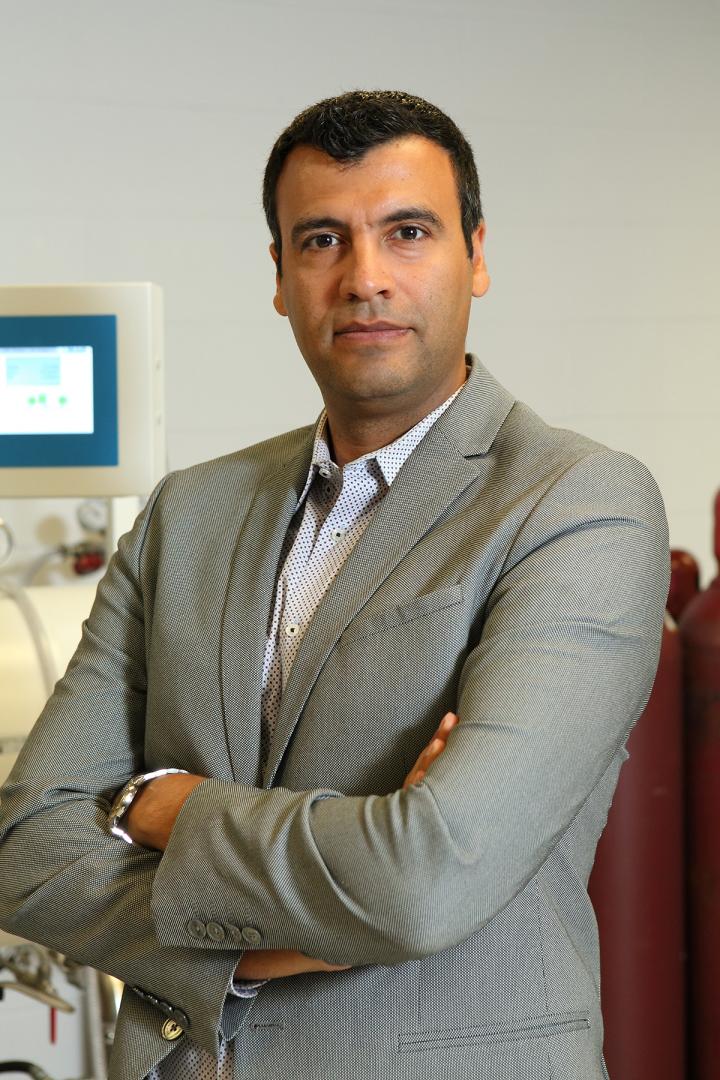UIC researchers capture new real-time images of bone, tooth formation

Credit: UIC/Jenny Fontaine
A new paper in Science Advances describes for the first time how minerals come together at the molecular level to form bones and other hard tissues, like teeth and enamel.
The University of Illinois Chicago researchers who published the paper described their experiments — which captured high-resolution, real-time images of the mineralization process in an artificial saliva model — and their discovery of distinct pathways that support bone and teeth formation, or biomineralization.
“Until now these pathways, particularly at the early stages when molecules are first starting to organize into a structure, have not been understood clearly,” Reza Shahbazian-Yasser, UIC professor of mechanical and industrial engineering at the College of Engineering and corresponding author of the paper.
Shahbazian-Yasser and his colleagues observed that both direct and indirect formations of hydroxyapatite crystals — the foundation of hard tissues — can be achieved by local variations in energetic pathways for nucleation and growth.
“The control over the dissolution of amorphous calcium phosphate affects the assembly of hydroxyapatite crystals into larger aggregates,” Shahbazian-Yasser said. “Using technology developed at UIC, we found evidence that these pathways coexist simultaneously — explaining why different groups had reported seemingly different or opposite results. In addition, we now understood how hydroxyapatite materials nucleate and grow on amorphous calcium phosphate templates. The control over the nucleation and growth of hydroxyapatite will aid in developing new drugs and medical treatments to heal lost or broken bone faster or cure tooth cavities.”
To capture the images, the researchers used a unique micro-device that made it possible to use electron microscopy with a liquid model. Using this method, the researchers were able to monitor chemical reactions in the model on the smallest scale.
“Our study provides clear, new evidence of how minerals organize and grow into bone materials, and this finding has many important implications for further research on bone or teeth healing,” Shahbazian-Yasser said.
“By better understanding these pathways, scientists are one step closer to engineering ways to better treat dental diseases and bone injuries — like those from traumatic injuries — or prevent medical conditions that can develop when normal mineralization processes in the body go awry,” he said.
Medical conditions caused by dysfunctional mineralization in the body can include everything from a tendency to develop cavities to osteoporosis.
“In the next step, we would like to learn how molecular modifiers can affect the process of biomineralization, which is important to develop effective drugs,” Shahbazian-Yasser said.
###
Co-authors of the study, which was funded by the National Science Foundation (1710049), are Kun He, Michal Sawczyk, Yifei Yuan, Boao Song, Ram Deivanayagam, Cortino Sukotjo, Petr Kral and Tolou Shokuhfar of UIC; Cong Liu and Jun Lu of Argonne National Laboratory; Anmin Nie of Yanshan University; Xiaobing Hu and Vinayak Dravid of Northwestern University, and Yu-peng Lu of Shandong University.
Media Contact
Jackie Carey
[email protected]
Original Source
https:/
Related Journal Article
http://dx.




